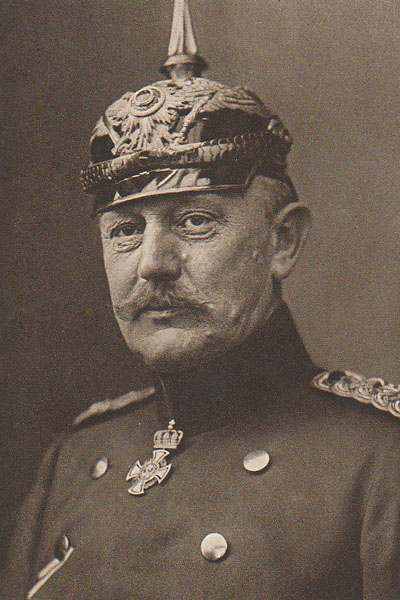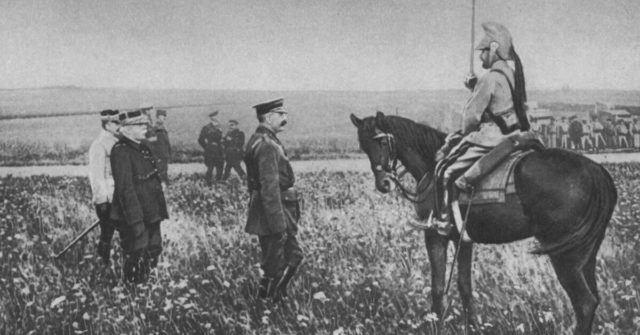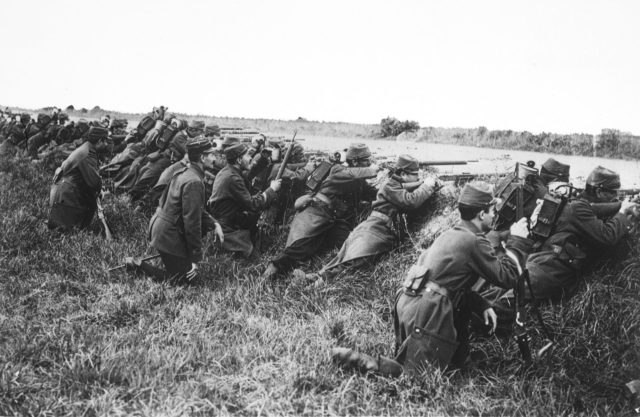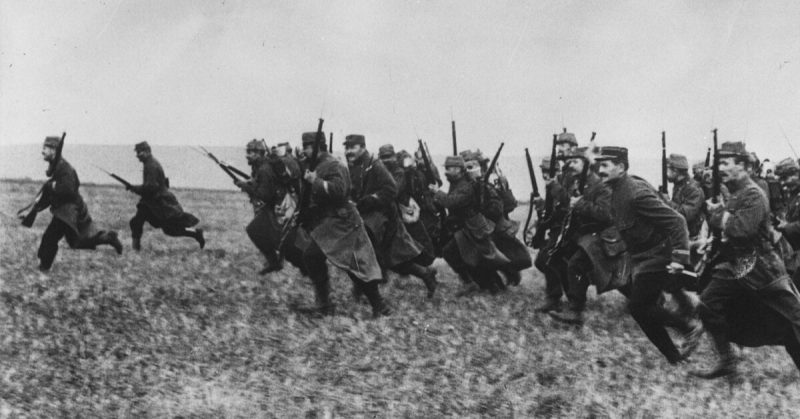The First Battle of the Marne was a tipping point in the early stages of the First World War. It was on the banks of the Marne the Germans, who had pressed forward so relentlessly into France, lost their nerve. There, the forward momentum on which their strategy relied finally came to a halt.
Confusion and Doubt
In September 1914, confusion was taking hold on both sides of the battle lines.
As always happens when armies clash, plans were falling apart. Transferring information from the front lines to commanders and back again was difficult, especially as both sides were nervous about using the telephone in case it was tapped.
Intelligence gathering was improved by spotter planes, but the technique for their use was not well developed. The information obtained was incomplete and often inaccurate.

The German Commander Field Marshal Helmuth von Moltke faced two further problems. One was the flagging performance of his troops, their advance hindered by fatigue and lack of information about what lay ahead of them. The other was adapting the carefully constructed Schlieffen plan.
The plan decreed that von Moltke should focus on reinforcing the German right flank. It was proving impossible. The need to protect lines of communication had drawn some troops off into Belgium. Von Kluck’s First Army placed on the right flank, was at risk due to the speed of its advance.
On September 4, von Moltke ordered von Kluck to take up a guarding position facing west. Efforts would now focus on the Fourth through Seventh Armies, confronted with the strongest parts of the French lines.
Arguments Between Allies
Meanwhile, the French and British were becoming muddled in their planning. Field Marshal Sir John French, the confusingly named Commander of the British Expeditionary Force (BEF), was wary of committing to battle alongside his French Allies. General Joseph Joffre, leading the armies of France, repeatedly asked for the British to participate in his plans.

Between this and a lack of communication, two separate plans were developed; one of them made by their subordinates in their absence. As messages hurtled back and forth, a plan was settled on for the British to advance to the north bank of the River Marne.
However, elements of the British army were retreating, in line with the other plan. Exaggerated reports of this caused arguments between the two command staffs. Tensions were high between the Allies.
First Clashes
On the afternoon of September 5, the French Sixth Army advanced into battle against the Germans. The results were heartbreakingly brutal. Ranks of French soldiers in their red and blue uniforms headed straight at the Germans and were mown down in a hail of machinegun fire, their bright clothes making them easy targets.
Along the line, advances were made and stalled as the Germans brought machine guns and artillery to bear. More and more French troops became engaged and by the next morning were bogged down; in some cases literally, thanks to marshy ground.
The one highlight for the French came from the single aircraft flying above the battlefield. With it, they were able to identify German artillery positions and use counter-battery fire to take them out.
Return of the BEF
Bolstered by newly arrived reinforcements, the BEF turned around and headed toward the fight. On the morning of September 6, a British cavalry brigade drove off their German opposite numbers near Rozay-en-Brie. For the most part, the British advanced without challenge, von Kluck pulling back to his defensive position.
Sir John French was nervous. He believed the Marne would be heavily defended and that the advance could become dangerous for his men. To the vexation of his allies, he proceeded with excessive caution.
To War by Taxi
The French Sixth Army was becoming increasingly vulnerable due to clashes with the Germans. More troops were needed.
Fortunately, the 7th Division had recently arrived in Paris. There they encountered a problem. Onward trains could not carry them to the front as fast as the commanders wanted.
All across Paris, police officers stopped taxis, ejected the passengers, and ordered the drivers to an assembly point. Half the 7th Division was heading to war by taxi. Early the next morning, they joined troops marching to face the Germans. The taxis, after some delay, were sent back to pick up more troops.
Nothing was going to stand in the way of Joffre’s plans.
Exhaustion Wins
German General Baron Max von Hausen, sick with typhus, was still one of the most effective Commanders of those few days. Realizing Kluck was under pressure from the British advance; he saw an opportunity to divert attention by breaking the French in their weakened center. Bringing together a force that included Guards divisions, he launched his attack.
Under cover of a foggy night, the Guards advanced silently on the French. The first their opponents knew of the attack was when the Germans appeared among them, attacking with bayonets. The French were forced back, pockets of resistance forming and then dissolving through the night.

As the British and French gathered troops to strike back, the Guards ground to a halt. At 1300, having been without rest or food for ten hours, they ran out of energy and stopped. There were no reinforcements on the way to maintain momentum.
Both sides had now stalled. The Allies kept making small, tired advances. Some met resistance, but by the time they reached Fère-Champenoise late on September 9, they found the enemy gone.
The Germans Retreat
The German high command, seeing their troops exhausted and their advance faltering, decided to fall back and consolidate. It came as a shock to many front line commanders and doubtless was a relief to the troops serving under them.
As the British advanced along the Marne on September 8 and 9, they found piles of dead and injured men, abandoned trenches, and empty bottles left by the retreating Germans. Over the next week, the invaders pulled back until they held a solid line. Then they dug in.
The German advance had been halted. Both sides were tired and battered. The war of movement was over. Now began the trench war.
Sources:
Martin Marix Evans (2002), Over the Top: Great Battles of the First World War.
Richard Holmes, ed. (2001), The Oxford Companion to Military History.
